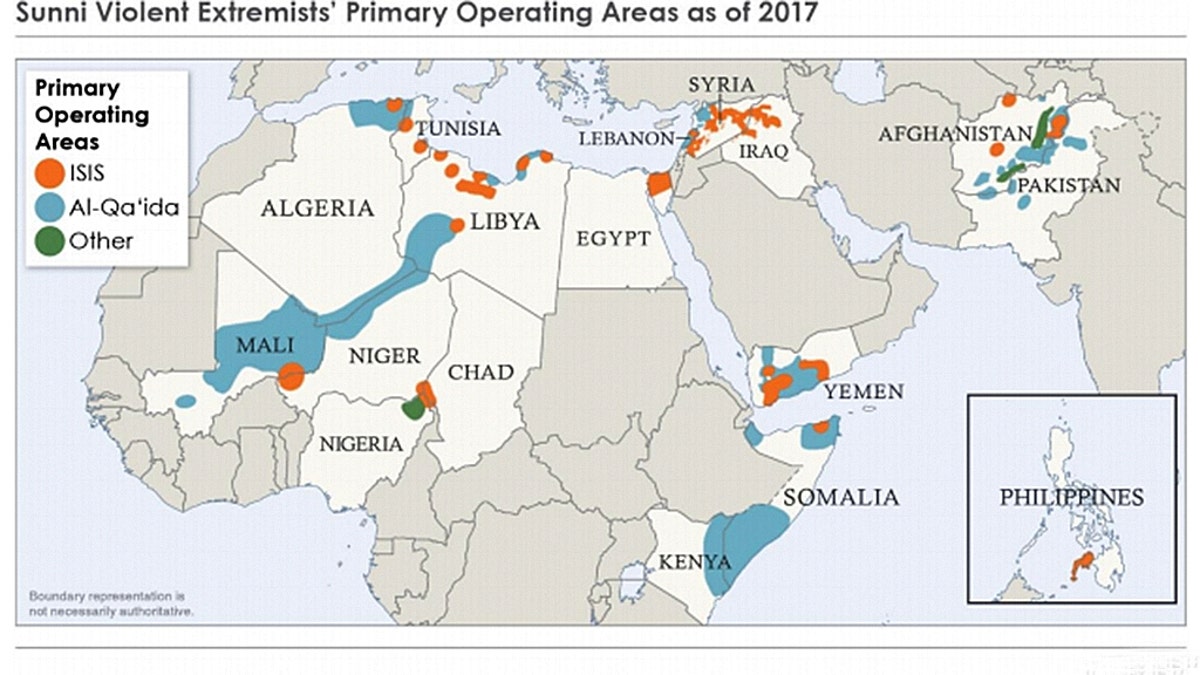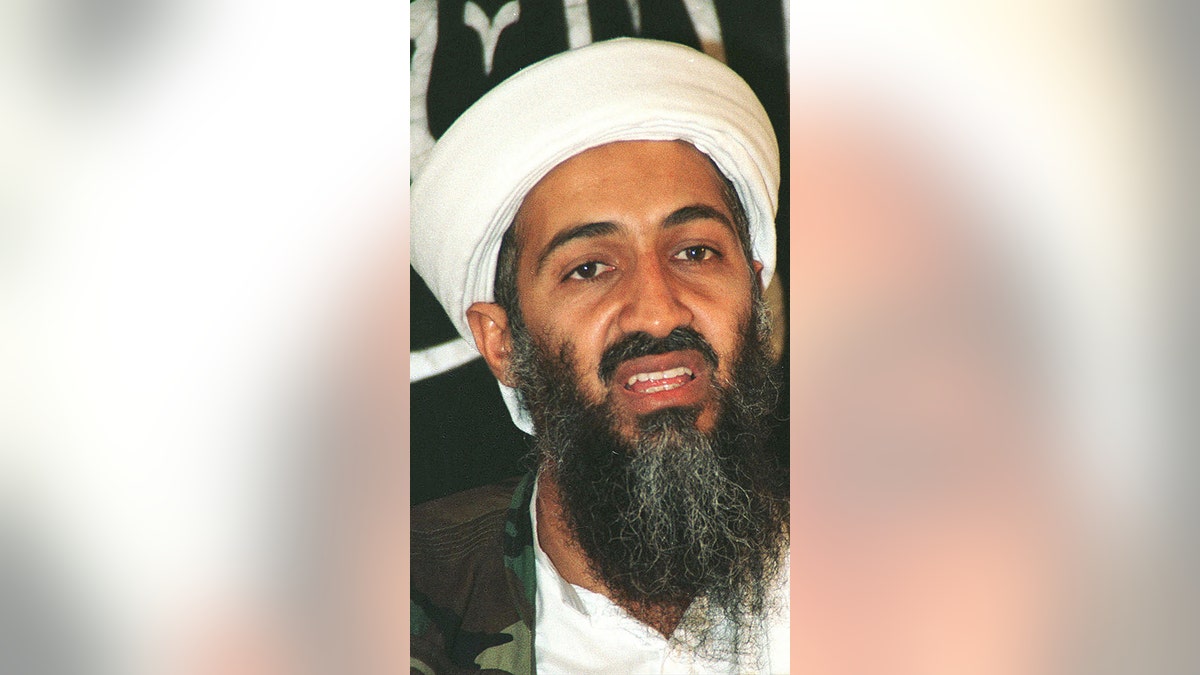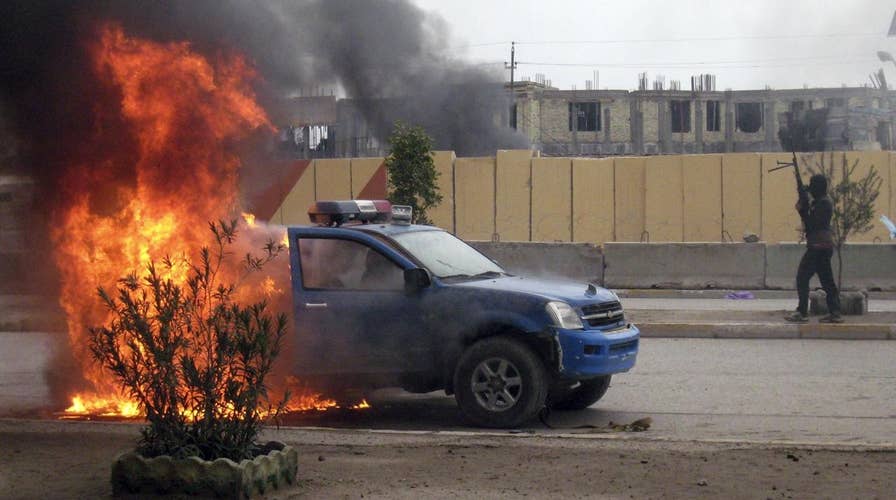Al Qaeda: Signs of terror group's resurgence
Al Qaeda: 30 years after the terror group's founding, its numbers are strong and seeing a resurgence.
Thirty years after its founding on Aug. 11, 1988, Al Qaeda is showing signs of a resurgence following ISIS’s near-defeat in Iraq and Syria, experts warn.
Al Qaeda shares the same long term goals as ISIS, but is pursuing them more slowly and carefully, Jennifer Cafarella, intelligence planner with the Institute for the Study of War, told FoxNews.com.
“ISIS's shock-and-awe tactics enabled it to mobilize tens of thousands of foreign fighters quickly, but did not enable it to sustain its battlefield successes or the scale of its recruitment,” Cafarella said. “Al Qaeda has been investing in the long game, and may now resurge as the leader of the global jihadist movement.”
It was on Aug. 11, 1988, in Peshawar, Pakistan, that Usama bin Laden conducted a meeting to discuss "the establishment of a new military group" called Al Qaeda, or the base. Handwritten notes of the meeting's minutes were seized in Bosnia after 9/11.
BIN LADEN'S SON MARRIES 9/11 LEAD HIJACKER'S DAUGHTER, REPORT SAYS

Al Qaeda operating areas inlcude portions of Africa, the Middle East and Southwest Asia. (U.S. Director of Intelligence.)
Ten years later on Aug. 7, 1998, Al Qaeda extremists bombed U.S. embassies in Kenya and Tanzania in near-simultaneous attacks. Another attack resulted in the death of 17 U.S. sailors on the USS Cole in Yemen in 2000.
A year later, on Sept. 11, 2001, Al Qaeda operatives at bin Laden's direction hijacked four jets and rammed three of them into New York's World Trade Center towers and the Pentagon. The fourth plane crashed into a field in Pennsylvania. The 9/11 terror attack killed nearly 3,000 people. In response, the U.S. launched the global War on Terror.
The manhunt for bin Laden came to an end in 2011 when Navy SEALs raided his compound in Pakistan and killed him - an event that some predicted would lead to Al Qaeda's demise. That didn't happen.
ISIS started as an Al Qaeda offshoot to fight U.S. troops in Iraq and then, after a falling out, gobbled up huge amounts of territory in Iraq and Syria while engaging in horrific attacks of brutality. At the same time ISIS leaders declared the establishment of an Islamic Caliphate spanning the two countries.

Usama bin Laden. (Reuters)
AL QAEDA-AFFILIATED TERROR GROUP LAUNCHES WAR ON PLASTIC BAGS
But by the end of last year, ISIS was in tatters as U.S.-led coalition troops liberated Iraqi and Syrian cities under ISIS control.
Still, Katherine Zimmerman, lead analyst on Al Qaeda for the American Enterprise Institute’s Critical Threats Project, told FoxNews.com that it may be too early to call the demise of ISIS.
She said the challenge ISIS posed strengthened, rather than weakened Al Qaeda.
“ISIS has made Al Qaeda seem less radical, less extreme, only because Al Qaeda will not employ the barbaric tactics that ISIS does to coerce and win loyalty through fear. Yet they seek the same goal,” Zimmerman said. “The problem with focusing on just ISIS or just Al Qaeda is that the U.S. has missed the real enemy—the Salafi-jihadi movement—of which Al Qaeda and ISIS are two global organizations.”
In February, United Nations experts monitoring sanctions against ISIS and Al Qaeda said affiliates in West Africa and South Asia “remain a threat at least as serious” as ISIS.
AL QAEDA USES GOOGLE MAPS TO PLAN ATTACKS NEW VIDEO REPORTEDLY SHOWS
The experts also reported that as ISIS suffered military losses in Syria, Iraq and the Phillipines in the second half of 2017, the Al Qaeda global network remained “remarkably resilient.”
“Al Qaeda affiliates remain the dominant terror threat in some regions, such as Somalia and Yemen, a fact demonstrated by a continuous stream of attacks and foiled operations,” according to the U.N. report.

Members of Al-Qaeda’s Jabhat al-Nusra in Idlib Province, Syria (Reuters)
Forces loyal to Al Qaeda and its affiliates now number in the tens of thousands, Bruce Hoffman, senior fellow for counterterrorism and homeland security at the Council on Foreign Relations, said in an article in March headlined, “Al Qaeda’s Resurrection.”
Hoffman said upwards of 4,000 fighters are in Yemen, 7,000 in Somali and 20,000 in Syria.
Al Qaeda has five affiliates: Jabhat al-Nusrah in Syria; Al Qaeda in the Arabian Peninsula in Yemen; Al Qaeda in the Indian Subcontinent in South Asia; Al Shabaab in Somalia; and Al Qaeda in the Islamic Maghreb in North Africa. The group also has ties to other groups in Syria, Afghanistan, Pakistan and West Africa.
“Al Qaeda is particularly strong in Syria, where it has positioned itself as a defender of Syria's rebelling community against the regime of Syrian president Bashar al-Assad and his backers,” Cafarella told Fox News.
“Al Qaeda's role in Syria provides a strong basis for recruiting and propaganda because it enables Al Qaeda to make a humanitarian argument: that Al Qaeda alone offers justice and defense against the atrocities that Assad is committing against his own population,” she said.
Over the years, Al Qaeda has dispatched a number of top leaders to Syria, including bin Laden’ son Hamza who was reportedly there last summer.
“Hamza has increasingly taken a leadership role within al Qaeda — a role for which he has been groomed his entire life,” Zimmerman said. “Hamza’s calls for jihad echo his father’s, and the bin Laden name gives Hamza credibility within the Salafi-jihadi movement.”
The U.S. has officially designated Hamza bin Laden a terrorist.
In testimony to Congress last year, Zimmerman said America’s strategy to counter Al Qaeda has remained relatively unchanged since 2001 even as the organization has adapted.
She told FoxNews.com: “For all of its setbacks, Al Qaeda remains on course to be exactly what Usama bin Laden envisioned it as thirty years ago: a covert vanguard that provides the strategic guidance and resources to local Islamists movements to support a global revolution.”










































